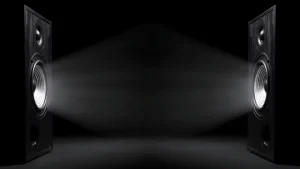To enhance the impact of your subwoofer, focus on adjusting settings, optimizing room acoustics, ensuring correct wiring, and possibly upgrading components.
In This Article:
Understanding Subwoofers
What a Subwoofer Is?
A subwoofer is a type of speaker designed to reproduce low-pitched audio frequencies known as bass. It complements the sound output of other speakers by delivering depth that small speakers can’t achieve.
Common Subwoofer Sizes
Subwoofers vary in size typically ranging from 8 inches to 15 inches. Size affects the displacement of air and potential loudness and bass response.
Types of Subwoofers (Passive vs. Powered)
- Passive Subwoofers: These require an external amplifier to produce sound. They provide flexibility in customizing sound systems.
- Powered Subwoofers: These have an integrated amplifier, simplify setup and space management, and are often more convenient for home use.
Reasons Why Your Subwoofer Isn’t Hitting Hard
Minimum Low-Frequency Output
Some subwoofers struggle to reproduce the lowest frequencies, leading to weak bass.
Power Issues
Insufficient power from the amplifier can prevent the subwoofer from reaching its full potential.
Incorrect Settings
Settings on the subwoofer or the accompanying audio equipment might not be optimized, which can diminish bass impact.
Room Acoustics
Poor acoustics can absorb or scatter the sound waves, weakening perceived bass quality.
Wiring and Connection Problems
Faulty or inadequate wiring, as well as improper connections, can limit performance and introduce noise or distortion.
How to Fix Subwoofer Issues
Test with Different Equipment
To determine if your subwoofer is the issue, test it with different amplifiers and sound sources. This can reveal if the problem is the subwoofer or another component in your system.
Check Polarity and Phase
Ensure all speakers in the system, including the subwoofer, are in phase. This means all sound waves should peak and trough in unison. Incorrect polarity or phase can cause bass notes to cancel out.
Adjust Settings
Fine-tune the volume, crossover, and phase settings on your subwoofer. Experiment with different levels to find the most powerful bass response.
Improve Acoustics
Enhance the room’s acoustics by adding sound-absorbing materials like rugs, curtains, and panels. Also, experiment with the subwoofer’s placement in the room to find the location where it sounds best.
Fix Wiring and Connections
Check all wires and connections for integrity and proper setup. Replace any damaged wires and ensure all connections are secure and correctly configured.
By addressing these issues and making appropriate adjustments, your subwoofer will deliver a much stronger and more satisfying bass performance.




